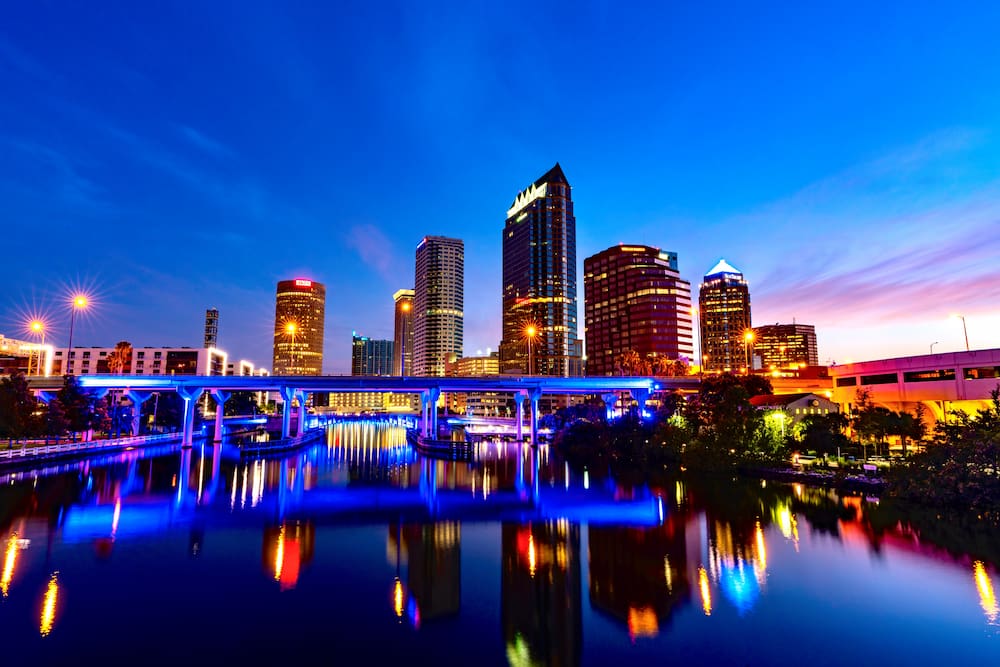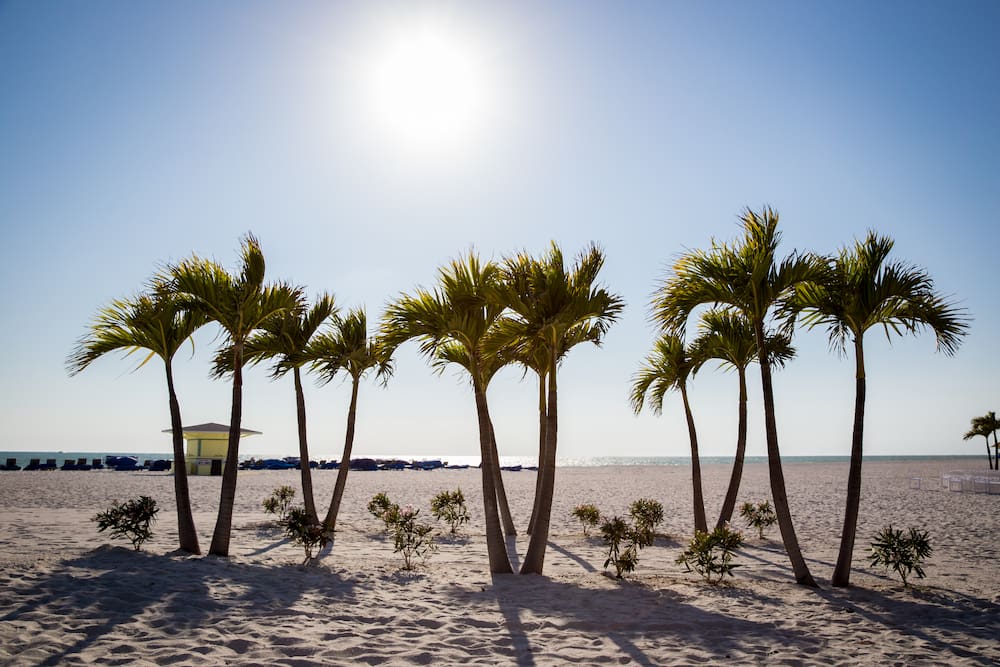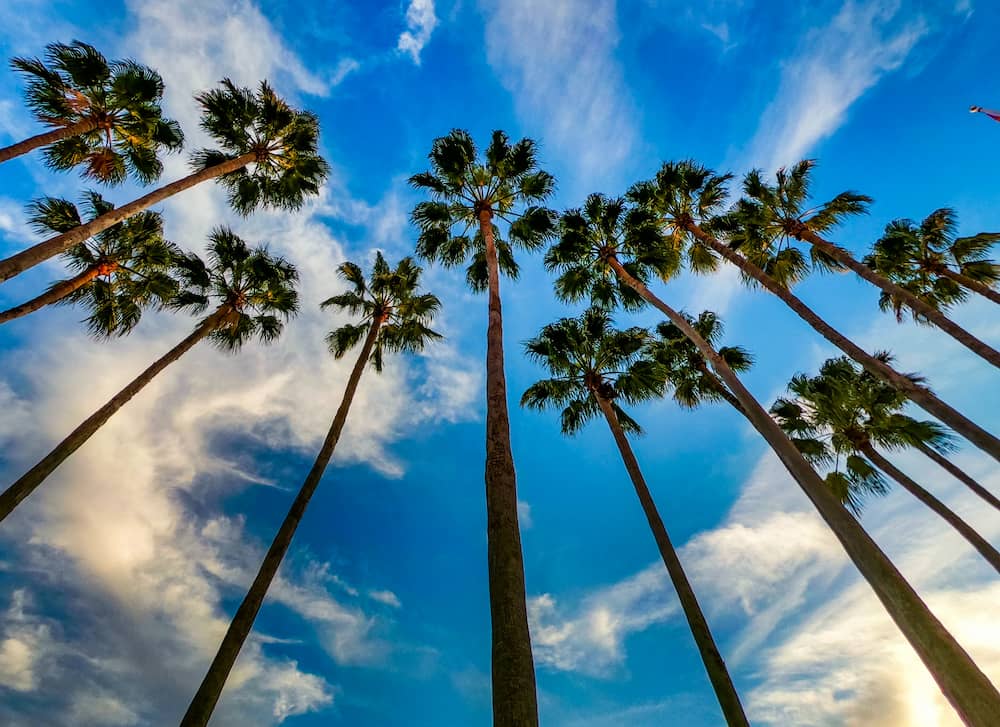9 Things to Know Before Moving to Tampa

Thousands of screaming fans, exhilarating aquatic experiences, and unique culture and cuisine make Tampa the hot spot in Florida. The city is even home to one of the largest parades in the United States (shiver me timbers)!
If you’re thinking about living in Tampa (or just want to learn more about “The Big Guava”) this blog is for you! We’ve created this guide to share some general statistics about the city, along with information including Tampa’s top neighborhoods, the cost of living and popular entertainment opportunities.
Keep reading to learn more about Tampa!
Tampa, FL in a Snapshot: Let’s get Warmed Up
Tampa is located on the Gulf Coast of Florida, about 84 miles southwest of Orlando. The Tampa Bay area actually includes Pinellas, Hillsborough and Pasco counties (including the cities of St. Petersburg and Clearwater), with a total population of more than 3.2 million people. The city of Tampa itself is in Hillsborough County, with a population of 384,959. It is popular among young families, professionals and retirees alike. Tampa is considered an urban area with plenty of restaurants, bars, parks and more.
| Tampa, FL | Stats |
| Population (2010) | 335,709 |
| Population (2020) | 384,959 |
| Land Area (in sq. mi.) | 114.02 |
| Time Zone | UTC-5 (EST) |
History of Tampa, FL
Tampa’s vibrant history has formed the city’s present-day atmosphere and culture. The state of Florida became a territory in 1821, and in 1824 Fort Brooke was established in the area that is now Downtown Tampa. Florida was granted statehood in 1845, and the village of Tampa was incorporated four years later.
The railroad extension in 1884 created the opportunity for further growth and tourist attractions (like lavish hotels). The mining and shipping industries boomed when phosphates were discovered in the area in the 1880s, and around that same time, Vicente Martinez Ybor established a cigar factory in town. Ybor City (Cigar City) has become a popular cultural destination in Tampa, known for its brick streets and iron balconies.
The military also played a crucial role in the growth of Tampa. The city served as an important port during the Spanish-American War, as U.S. troops headed for Cuba. MacDill Air Force Base, which houses the U.S. Central Command and U.S. Special Operations Command, is currently located in Tampa as well.
The downtown business district has undergone major redevelopment since the 1960s. The city is currently planning construction projects like new hotels and restaurants, along with renovations at the Tampa International Airport and the Tampa Convention Center. Tampa is looking toward the future, and even more improvement and excitement are on the horizon.

Things to Know before Moving to Tampa
Now that you know some general statistics and the history of Tampa, it’s time to dive right in. Keep reading for 9 things to know before moving to Tampa!
1. Settle down in a good neighborhood
Tampa offers a variety of popular neighborhoods for young people, families and retirees. Whether you prioritize proximity to downtown, walkability or safety, you can find it all in Tampa.
The Hyde Park neighborhood is known for its rich history and offers residents a truly unique experience. Founded in the 19th century, it originally boasted stately homes, tree-lined streets and historic architecture, but has transformed to blend modern style with tradition. Hyde Park is home to many restaurants, shops, nightlife and more.
According to Niche.com, other top neighborhoods in Tampa include Harbour Island, Palma Ceia West and Channel District.
Ybor City is another popular spot in the Tampa area. Once known as the “Cigar Capital of the World,” it is the only neighborhood on the west coast of Florida to be designated a National Historic Landmark District. The neighborhood offers an eclectic mix of history and entertainment, along with a variety of stores, restaurants and museums.
The cities of Clearwater, Dunedin and Gulfport are a little farther from central Tampa, but are still considered top spots to live in the Tampa Bay region.
2. Cost of Living
According to BestPlaces.net, the overall cost of living in Tampa is slightly higher than both the cost of living in the state of Florida and the national average. Housing, transportation and grocery costs contribute to this statistic.
Niche.com reports the median home cost in Tampa is $277,700, higher than the national average of $244,900. Rent in Tampa is also slightly more than the national average, $1,249 vs. $1,163. The ratio of renters to homeowners is about 50/50.
One benefit to living in Florida is that there is no state income tax. But, there are additional costs to consider, like flood insurance.
3. Some areas are safer than others
The crime grade of the Tampa Metro area is a C+ according to CrimeGrade.org. This means the Tampa metro is about as safe as the average U.S. metro area. The Tampa metro area has a similar crime rating compared to some of the surrounding metro areas, including Lakeland Metro, FL (B-), Sarasota Metro, FL (C+), Melbourne Metro, FL (B+) and Orlando Metro, FL (C+).
4. You’ll (probably) need a car
Although Tampa is an urban area with beautiful weather, a car can come in handy. Sure, if you’re located right downtown and wear your sneakers every day, it’s great. But if you have work downtown and live in a suburb, walking isn’t going to work.
According to BestPlaces.net, on average, the one-way commute in Tampa takes about 24 minutes (which is shorter than the U.S. average of 26.4 minutes). But, there is a significant amount of traffic in Tampa. The city has the 12th worst traffic of any U.S. city. About 78.1% of the population drives a car every day, and only 2.5% utilize mass transit on a regular basis.
Speaking of mass transportation, Tampa has a 2.7-mile streetcar line that goes through Downtown, the Channel District and Ybor City. TBARTA (Tampa Bay Area Regional Transit Authority) partners with local transportation providers to operate nearly 500 buses serving almost 28 million passengers each year.
5. Sports are king
You might as well call it “Champa Bay.” In the last few years, professional sports in Tampa have been on a hot streak. The Tampa Bay Lightning (NHL) brought home the Stanley Cup in both 2020 and 2021, and the Tampa Bay Buccaneers (NFL) defeated the Kansas City Chiefs in Super Bowl LV. The Tampa Bay Rays also made it to the World Series, but lost to the Los Angeles Dodgers in 2020.
Tampa also hosts the New York Yankees for spring training at George M. Steinbrenner Field. The Tampa Bay Rowdies are the professional soccer team in the Bay area and the Tampa Tarpons is the Minor League Baseball team. Don’t miss the University of South Florida Bulls or the University of Tampa Spartans for some fun collegiate action.

6. Plan on spending time outside
The weather in Tampa definitely encourages outdoor adventure! Although the hot, muggy summer days may leave you tempted to stay in the air conditioning, many Floridians think that’s the perfect time to get in—or on—the water.
Hillsborough River State Park is just minutes from downtown Tampa and offers nature trails, a variety of wildlife viewing opportunities, paddling, hiking, fishing and more. Other areas to explore include Flatwoods Conservation Park and Lettuce Lake Conservation Park. Check out Alafia River State Park to try mountain biking in Tampa!
The Tampa Bay area is also home to a number of breathtaking beaches. Clearwater Beach is stunning, but it can get crowded. You can also check out Ben T. Davis Beach, Treasure Island, Indian Rocks, St. Pete Beach, Fort Desoto Park and Caladesi Island State Park!
Take a stroll along the Tampa Riverwalk to explore culture, entertainment and incredible views. Or, walk Bayshore Boulevard Greenway, one of the longest continuous sidewalks in the U.S., covering 4.5 miles along the shoreline of Tampa Bay.
If you’re in the Tampa Bay area anytime in November through mid-April, you have to try to spot some manatees! Visit Tampa Electric’s Manatee Viewing Center to see these gentle giants hang out!
7. Higher education opportunities around Tampa
The Tampa Bay area is home to several world-class colleges and universities. The University of South Florida serves more than 50,000 students at its campuses in the Tampa Bay area. According to Forbes’ list of America’s top colleges, USF ranks in the top 50 of public institutions. The USF Bulls field 19 varsity teams and have tallied14 national championships in various sports throughout the years.
The University of Tampa is also a nationally recognized institution of higher education. Approximately 10,566 students were enrolled in Fall 2022. The university has won 21 NCAA Division II championships in baseball, men’s golf, men’s and women’s soccer and women’s volleyball and beach volleyball, along with 118 Sunshine State Conference titles.
Florida College, Eckerd College, Hillsborough Community College and Springfield College are among the other schools in the Tampa area.
8. Vibrant culture and arts
Discover the unique and electric culture in Tampa by visiting museums, theaters, festivals and more both in and around the city! Visit the Tampa Museum of Art, the Dali Museum or even the USF Contemporary Art Museum to check out both historic and modern works of art. Other popular spots include the MOSI (Museum of Science and Industry), the Tampa Firefighters Museum, the American Victory Ship Mariners Museum or the Tampa Bay History Center.
Don’t forget to catch a performance at the Straz Center for the Performing Arts or watch a movie at the Tampa Theatre (one of America’s most elaborate movie houses).
Ahoy mateys! If you’re in town in January, you better be ready for the Gasparilla Pirate Fest. It’s named after Jose Gaspar, an infamous pirate of the late 18th and early 19th centuries. The celebration features one of the largest parades in the United States, along with road races, music and film festivals during an eight-week period.
9. You’ll find more than Cuban sandwiches
Tampa may be known for their Cuban sandwich (as the city claims to be the birthplace of the iconic food), but there are many more cuisines and eats to try in the Tampa Bay area.
Ulele is one of the top restaurants in the area and is located on Tampa’s Riverwalk. They serve vibrant dishes using fresh, native ingredients. Datz is another highly rated eatery offering comfort food and craft brews.
Don’t forget to visit one of Florida’s oldest restaurants, Columbia Restaurant. They have been serving Spanish-Cuban cuisine to Florida for more than 117 years. Or, try some of the best soul food in Tampa.

FAQs: Tips for Moving to Tampa
Q: Is it a good idea to move to Tampa?
A: There are many great reasons to move to Tampa, but only you can decide if Tampa is right for you! The city is committed to development and improvement projects, and is home to a vibrant culture, beautiful weather and fantastic food. But, the cost of living in Tampa is slightly higher than the national average, and traffic can be an issue.
Q: What is the best time of the year to move to Tampa?
A: The best time to move to Florida is during the fall or winter. Avoid moving during the hot and muggy summer months!
Q: What part of Tampa is best to live in?
A: One of the best neighborhoods in Tampa is Hyde Park. Ybor City and Harbour Island are other highly rated neighborhoods in the area.
Q: What is the safest part of Tampa to live in?
A: Some of the safest neighborhoods in Tampa include Ballast Point, Hyde Park and Palma Ceia.
What do you think about Tampa?
Are you ready to make the move to Tampa? We left out one "pro" of living in Tampa—Store Space! Visit any of our Tampa Bay area locations (such as Tampa or St. Pete) for help with all your self-storage needs!
Just visit one of our nearby facilities or complete a rental online to get more space in Tampa. You can find your nearest location in Florida or across the U.S. using our storage location finder. We care about Tampa!






